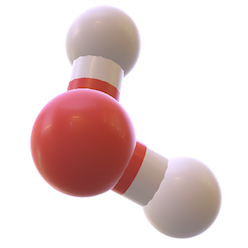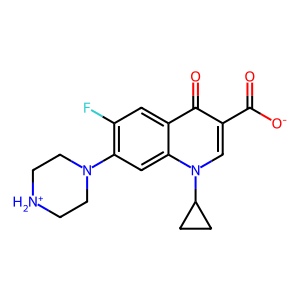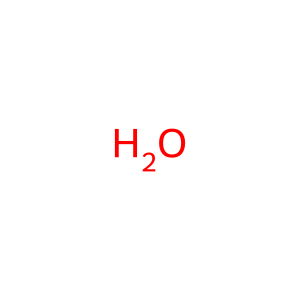Reaction: Cipro is oxidized to oxo-Cipro
- in pathway: Ciprofloxacin ADME
Oxo-Cipro (oxociprofloxacin, M3) is a major metabolite of Cipro (ciprofloxacine) from which it is formed by several phase I biotransformations in hepatic cells (Joos et al, 1985; reviewed by Campoli-Richards et al, 1988; Sörgel, 1989; Sörgel & Kinzig, 1993). The steps probably involve oxidation to the intermediate hydroxyciprofloxacin, reactions catalyzed by cytochrome P450 enzymes and monoaminooxidases, followed by dehydrogenation catalyzed by either cytochrome P450 enzymes or aldehyde oxidases, yielding the lactam (reviewed by Bolleddula et al, 2014; Vickers & Polsky, 2000; reviewed by Lynch & Price, 2007). Cipro inhibits Cytochrome P450 1A2 (CYP1A2) (Batty et al, 1995; Granfors et al, 2004) but its role as a CYP1A2 ligand has not been shown.
Reaction - small molecule participants:
H2O [cytosol]
oxo-Cipro [cytosol]
Cipro [cytosol]
O2 [cytosol]
Reactome.org reaction link: R-HSA-9794840
======
Reaction input - small molecules:
ciprofloxacin zwitterion
dioxygen
Reaction output - small molecules:
water
3-oxociprofloxacin
Reactome.org link: R-HSA-9794840




